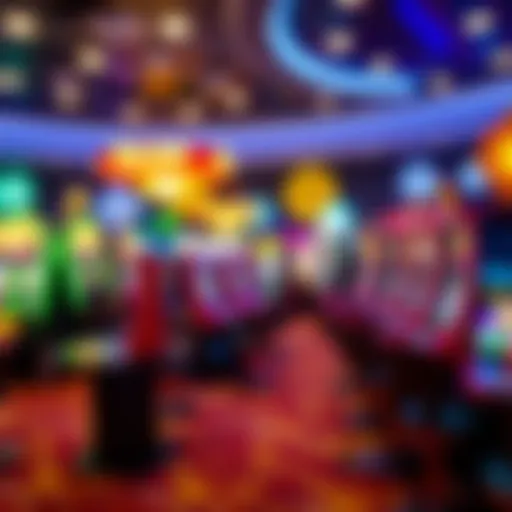Exploring Las Vegas Lounge Acts: Culture and Performance
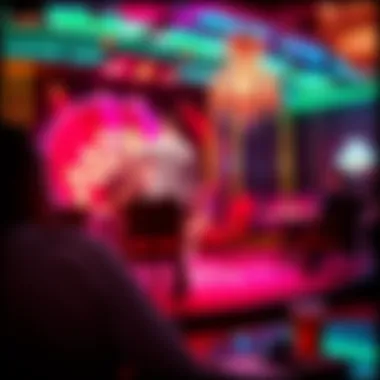
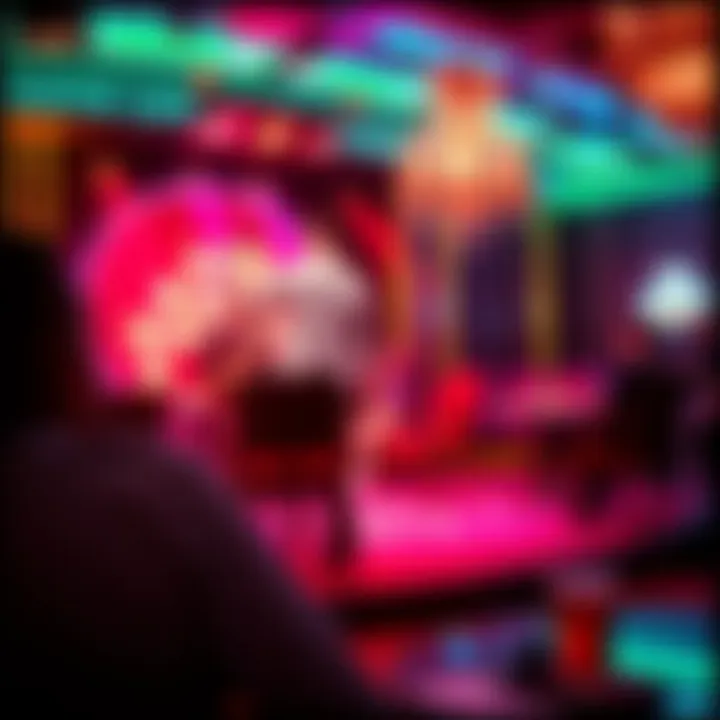
Intro
When folks think about Las Vegas, images of high-stakes poker games and dazzling casinos probably spring to mind. But there’s a rich layer of entertainment woven into the fabric of this city that’s often overlooked: lounge acts. These performances don’t merely serve as background music; they are an intricate part of the Vegas experience, painting the story of its nightlife in shades of talent and tradition.
Lounge acts have a history that stretches back to the early days of the Strip. Originally considered the cornerstone of low-key entertainment, they’ve morphed and evolved over the decades, reflecting shifts in culture and audience preferences. Whether it's crooners belting out sweet ballads or magicians pulling rabbits from their hats, these acts provide warmth amid the glitz.
This article aims to peel back the layers on lounge acts in Vegas, exploring their historical significance, notable performances, and what they reveal about the cultural heartbeat of the city. We’ll also delve into key venues and the artists that have dominated this scene, shedding light on how lounge acts contribute to the broader entertainment landscape.
In this exploration, everyone from seasoned gamblers to curious visitors will find insight into how lounge acts capture the essence of Las Vegas, making it a hub for artistic expression. Let’s take a closer look at what makes these lounge performances such a vital part of the Vegas nightlife.
Foreword to Lounge Acts
Lounge acts have grown into an integral part of the Las Vegas experience, representing not only entertainment but also a vibrant fusion of various musical and performative styles. When one thinks of Las Vegas, glitzy casinos and extravagant shows may spring to mind. However, at the heart of this hospitality-driven wonderland lies the lounge scene, offering a more intimate environment for a diverse range of performances.
Understanding lounge acts entails recognizing their unique blend of artistry and culture. These performances create a bridge between diverse audiences, enveloping them in a soundscape that reflects the city’s eclectic energy—often allowing casino enthusiasts and casual visitors alike to enjoy a musical and cultural palate.
Lounge acts, in a sense, are the heartbeat of Las Vegas nightlife. They offer a more laid-back option for those who wish to unwind after a day of high-stakes gambling or a whirlwind tour of the Strip. Whether it’s the smooth tunes of a jazz band or the punchlines delivered by a stand-up comic, lounge acts provide spaces where patrons can decompress while indulging in artistic expression. They foster an atmosphere of community and connection amidst the hustle and bustle of the city.
Aside from entertainment, the significance of lounge acts can also be seen in the way they adapt to shifting social trends. They often serve as a reflection of the times, showcasing the cultural influences that shape entertainment styles in Las Vegas. This adaptability not only preserves the lounge culture but also revitalizes it, keeping it relevant for contemporary audiences.
In this exploration, we will dive into the nuances of what defines these acts, how lounge culture emerged, and how it has evolved over the decades—all vital pieces to grasp the full picture of lounge performances in Las Vegas.
Historical Context of Lounge Performance
Understanding the historical context of lounge performance is crucial for appreciating the role these acts have played in shaping Las Vegas into one of the world's premier entertainment capitals. This backdrop offers insights not only into the evolution of performance but also reflects the changing social dynamics of the time. The lounge scene is rich with stories, characters, and an ambiance that has been forged over decades, where art meets the allure of nightlife. By examining the past, we highlight the artistic pathways that have led to contemporary lounge acts, ensuring that readers grasp the significance behind each note and laugh in these intimate settings.
The Rise of Vegas in the Mid-Twentieth Century
Las Vegas began its ascent in popularity during the mid-twentieth century, transitioning from a modest desert settlement to a sparkling oasis of entertainment. This period saw an influx of tourists eager to experience not just the gaming shows but also the vibrant nightlife. The 1950s and 1960s marked the golden age of lounge acts, with establishments like the Sands and the Dunes becoming hotspots for both tourists and locals.
During this era, the lounge culture in Las Vegas flourished, offering a mix of music, comedy, and variety acts. It was a time when performers such as Frank Sinatra started to blend their big band performances with intimate lounges, making the act feel personal and engaging. For many, the lounge became a sanctuary away from the high-paced casino floor, allowing patrons to enjoy live music while sipping cocktails in a relaxed atmosphere. The combination of gambling and live entertainment created a synergy that only Las Vegas could master.
As the town further developed, lounges became synonymous with the city itself. The warm glow of neon lights beckoned visitors, echoing the promise of a good time. Each lounge had its unique flair, leading to a diverse range of performances that appealed to different crowds. Some sought the sultry sounds of jazz while others preferred the comedic musings of local talent. This rich tapestry of talent laid the groundwork for what lounge acts would evolve into, providing a constant churn of innovation and creativity.
Influential Performers from the Past
The legacy of lounge acts wouldn’t be complete without acknowledging the influential performers who shaped its trajectory. Artists like Sammy Davis Jr., Dean Martin, and Judy Garland weren't just entertainers; they were cultural icons who brought a touch of glamour and sophistication to the stage. Their performances transcended mere music; they embedded themselves into the cultural psyche of the audience.
"These performers weren't just singing songs, they were telling stories that resonated with the audience, leaving an indelible mark on the fabric of Las Vegas entertainment."
This list isn't exhaustive, yet it provides a glimpse into the stars who infused life into the lounges. As these entertainers honed their craft, they also paved the way for future generations, inspiring upcoming acts who would follow in their footsteps. The legendary Elvis Presley kickstarted a revolution of rock and roll, while other artists adopted and adapted lounge styles, ensuring that the genre stayed fresh and relevant. Each performer added layers to the historical significance of lounge acts, contributing to a rich narrative that continues to thrive today.
In understanding the journey of lounge acts through this historical lens, we not only gain an appreciation for the performances of the past but also recognize their influence on the current and future state of Las Vegas entertainment.
Key Venues for Lounge Acts
The significance of key venues for lounge acts in Las Vegas cannot be overstated. These spaces not only serve as stages for talented performers but also shape the overall lounge culture of the city. They are venues where music and comedy intermingle, attracting diverse crowds that include tourists and locals alike. The atmosphere of these lounges often sets the tone for the type of performance that takes place, creating a unique environment that enhances audience engagement. The right venue can elevate a simple performance into an unforgettable experience, making the distinction between a good show and a great one.
Iconic Lounges in Las Vegas
Within the vibrant landscape of Las Vegas, certain lounges have carved out a niche for themselves as iconic spots. One such venue is The Copa Room at the Riviera Hotel. Known for its rich history, this lounge has hosted legends like Frank Sinatra. Its intimate setting creates a domed effect where every note sung is felt deeply by the audience. Another noteworthy name is the lounge at the Venetian, which offers a more modern touch with a glamorous atmosphere, serving as a hub for contemporary jazz bands and solo artists.
The Golden Nugget's showroom is a staple of classic Vegas nostalgia. This venue embodies the spirit of the Strip, offering performances that align with the vintage charm of the city. With a cocktail in hand, patrons can enjoy shows that range from sultry jazz to thrilling comedy. Each of these lounges presents a character unique to themselves, whether it be through their historical significance or current trends.
Emerging Locations and Trends
As the lounge scene continues to evolve, newer venues have emerged to complement the classic ones. Places like The Speakeasy at The Cosmopolitan of Las Vegas merge modern design with an old-school vibe, attracting high-energy crowds seeking a fresh experience. These newer spots often prioritize unique thematic elements in their performances, catering to a younger audience more in tune with contemporary styles while still appreciating traditional influences.


Another tangible trend is the rise of pop-up lounges which focus on rotating themes and varying acts. These venues are a reflection of the dynamic culture in Las Vegas, where change is the only constant. They highlight the versatility of lounge acts and can quickly adapt to current music trends, from electronic to live remixes of classics.
This evolution is not just a passing phase but a response to the shifting preferences of audiences. It signifies a blending of traditional and innovative styles, ensuring that the essence of lounge performance remains vibrant and relevant, making it a critical aspect to observe in the future of Las Vegas nightlife.
"In Las Vegas, the environment of the lounge establishment can influence not just the performance but also the audience's experience, turning a night out into a treasured memory."
As more changes unfold, one thing is clear: lounges in Las Vegas will continue to attract attention, enriching the cultural tapestry of the city.
Types of Lounge Acts
Lounge acts in Las Vegas present a kaleidoscope of entertainment, showcasing a variety of performances that appeal to an eclectic audience. Each type possesses its own allure and charms, weaving a fascinating narrative that resonates with the cultural heartbeat of the city. Understanding these types not only highlights their significance but also places them within the larger context of Las Vegas’ vibrant nightlife. Here’s a closer look at the myriad forms of lounge acts that grace the stages across this dazzling city.
Musical Performances
Music is the lifeblood of lounge acts, creating an atmosphere where guests feel at ease, ready to unwind. Within this category, we find various styles, each contributing uniquely to the auditory landscape of Las Vegas.
Jazz Bands
Jazz bands are often seen as quintessential players in the lounge scene. Their improvisational style brings spontaneity to performances, creating an intimate connection with the audience. Jazz’s key characteristic is its ability to blend different influences, from blues to swing, making it applicable for various tastes.
- Unique Feature: The synergy between musicians allows for spontaneous performances, enhancing audience engagement.
- Advantages: This dynamic interaction often results in unique renditions of classic songs, ensuring that each performance feels fresh.
- Disadvantages: However, the atmosphere they create may not suit everyone, as it often relies on a certain understanding or appreciation of jazz.
Solo Acoustic Artists
The allure of solo acoustic artists lies in their personal storytelling through music. They are typically stripped down, presenting their songs in a raw and authentic form. Solo acoustic artists often offer a sense of intimacy, which is well-suited for lounge settings where patrons seek a connection.
- Unique Feature: Their performance style often encourages audience participation, creating a two-way interaction.
- Advantages: This intimacy can be particularly appealing in spaces where guests want to have conversations or simply relax.
- Disadvantages: However, they may also risk fading into the background for audiences looking for more elaborate spectacles.
Cover Bands
Cover bands hold a distinct place in the lounge experience, often bridging generational gaps. They revive well-loved classics, making it easy for guests to sing along. The undeniable appeal of these acts comes from their versatility at catering to diverse crowds.
- Unique Feature: They can adapt to any venue, playing a mix of genres that fulfills varying audience preferences.
- Advantages: They provide nostalgia and familiarity, which invites guests to engage more actively with the performance.
- Disadvantages: On the downside, they might lack the originality that distinguishes other types of acts, sometimes leading to a predictable experience.
Comedy Performances
Comedy adds a refreshing touch to lounge acts, drawing laughter and joy amidst the sultry backdrop of Las Vegas.
Stand-Up Comedians
Stand-up comedians bring the house down with their unique perspectives. Bringing personal anecdotes, social commentary, or even observational humor, they create an atmosphere where laughter is a collective experience.
- Key Characteristic: Stand-up allows for spontaneity, as comedians often riff off audience reactions.
- Advantages: This format builds a lively interplay with the crowd, often resulting in memorable moments.
- Disadvantages: However, the humor can sometimes be hit-or-miss, depending on the crowd's vibe.
Improv Groups
Improv groups thrive on audience suggestions, crafting skits that are as unique as the crowd present. Their charm lies in their unpredictability, as no two performances are ever alike.
- Key Characteristic: The essence of improv is interaction, heavily relying on audience involvement for narrative creation.
- Advantages: This interactive aspect captivates the audience fully, keeping them engaged throughout.
- Disadvantages: Yet, the unconventional nature can leave some spectators feeling disconnected if the humor doesn't resonate with them.
Variety Acts
Variety acts encompass a diverse range of performances, from magic to burlesque, captivating audiences with unexpected elements.
Magicians
Magicians offer an escape into the fantastical, using illusions and sleight of hand to create awe and wonder. They introduce an element of surprise, often leaving audiences questioning reality.
- Key Characteristic: Their act includes intricate setups that keep spectators on the edge of their seats.
- Advantages: A good magician engages all senses, making every moment feel electrifying.
- Disadvantages: However, sometimes, the reliance on trickery can result in misalignment with guests looking for authenticity.
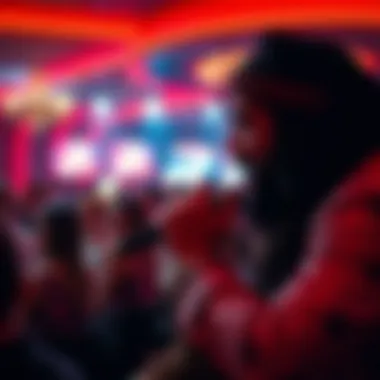
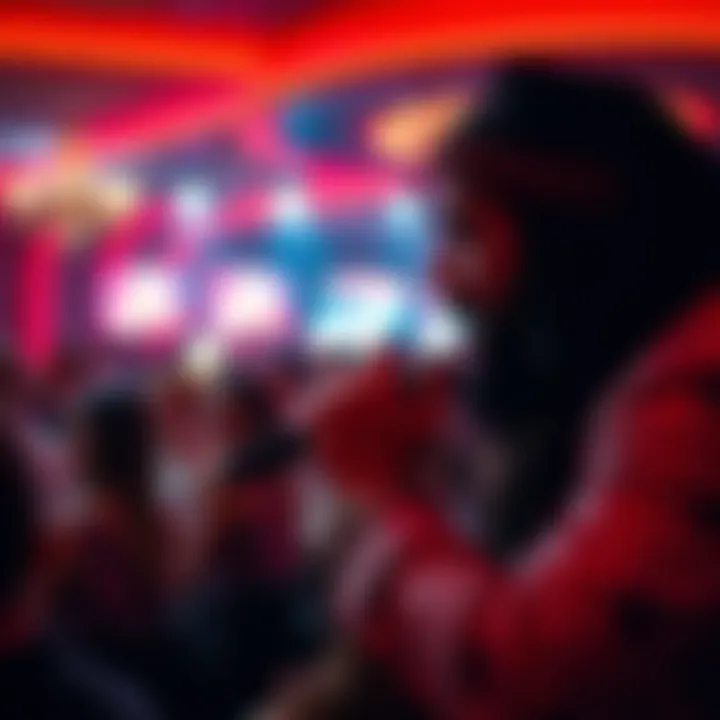
Illusionists
Illusionists often take magic a step further, presenting grand performances that mesmerize larger audiences. Unlike magicians, their acts can include dramatic narratives and elaborate staging.
- Key Characteristic: Their showcases often involve stunning visuals and illusions that challenge perception.
- Advantages: Audiences enjoy elaborate narratives that complement the performance.
- Disadvantages: Yet, the spectacle can sometimes overshadow the intimate connection typical of smaller lounge acts.
Burlesque Performers
Burlesque weaves together dance, theatrics, and humor, creating a provocative and playful environment. This art form challenges conventional norms through its bold expression.
- Key Characteristic: It balances sensuality with humor, often regaling audiences with extravagant costumes and performances.
- Advantages: Burlesque captivates a diverse audience, appealing to those who enjoy vibrant and daring artistry.
- Disadvantages: Yet, its sometimes controversial themes may not resonate with every crowd, potentially alienating more conservative patrons.
Cultural Significance of Lounge Acts
Lounge acts in Las Vegas are more than just performances in dimly lit rooms; they serve as a cultural barometer, reflecting the societal norms and creative pursuits of their time. From the glamorous days of the Rat Pack to the present era of multimedia spectacles, lounge acts manifest the changing tides of public taste, making them a vital aspect of Las Vegas’s entertainment landscape.
Reflecting Social Trends
Lounge acts have an intrinsic connection to the social fabric of the community they serve. Over the decades, the themes performed on stage often mirror the collective consciousness of society. For example, during the flamboyant 1960s, entertainers like Frank Sinatra and Dean Martin not only garnered massive audiences, they also influenced lifestyle trends and fashion choices. In contrast, today’s performances may incorporate technology and contemporary social issues, resonating with younger audiences who are attuned to digital culture and social activism.
The types of songs and jokes played in these lounges often serve as commentary on the world around us. Whether it’s through nostalgic tunes that hark back to simpler times or edgy stand-up routines tackling the latest crazes, lounge acts deftly mirror the prevailing attitudes, fears, and aspirations present in society. This adaptability is what keeps lounge culture vibrant and relevant, as performers continually gauge audience reactions and adjust their material accordingly.
A Melting Pot of Styles
Las Vegas lounges are essentially a microcosm of cultural exchange. They bring together talents from diverse backgrounds, showcasing a mix of genres and styles that redefine what it means to be an entertainer. This convergence results in a rich tapestry of performances that can include everything from jazz and blues to cabaret and burlesque. One might witness a Brazilian samba dancer seamlessly integrated with a jazz quartet, or a hip hop artist collaborating with a classical violinist right on the same stage.
The audience itself plays a significant role in this cultural fusion. Patrons from various corners of the globe converge in these lounges, bringing their own expectations and experiences. Performers respond to these diverse viewpoints, leading to spontaneous collaborations that Birth innovative acts which further evolve the lounge experience. This dynamic exchange not only enhances the artistic expression found in Vegas but also promotes a sense of inclusiveness and community among attendees.
"In a way, lounge acts in Vegas don’t just entertain; they build bridges across different cultures and traditions, creating a shared experience that transcends mere performance."
The eclectic nature of lounge acts greatly contributes to the ongoing evolution of leisure and entertainment in Las Vegas. They showcase that, regardless of the changes in taste and technology, the essence of lounge culture remains: connecting people through the universal language of performance. It’s this cultural significance that anchors lounge acts deeply within the heart of Las Vegas, elevating them beyond entertainment while reflecting the rhythmic pulse of society itself.
Notable Lounge Acts and Performers
The tapestry of Las Vegas entertainment is woven with threads of notable lounge acts and performers. Their contributions not only shape the lounge scene but also reflect the broader cultural dynamics of the city. Through the lens of both history and contemporary trends, these acts often serve as barometers for the artistic pulse of Las Vegas. Each act leaves a distinct imprint, offering unique styles, sounds, and experiences.
Legends of the Lounge Scene
Frank Sinatra
Frank Sinatra, a name synonymous with classic crooning, represents the quintessence of lounge culture. His velvet voice and magnetic stage presence turned lounges into venues of sophistication and flair. Sinatra's ability to connect with audiences was unparalleled, and through his performances, he conveyed a blend of vulnerability and charisma that made each show feel personal. One of his key characteristics was his impeccable phrasing, transforming lyrics into intricate stories.
The allure of Sinatra for this discussion lies in his role as a cultural icon who elevated lounge performances to an art form. His repertoire stretched from jazz to pop, earning him acclaim across diverse audiences. While some might argue that his style is a relic of the past, his influence persists today. The unique feature of Sinatra’s music is its timelessness; even decades later, his songs resonate with listeners, ensuring his legacy continues to influence new artists.
Elvis Presley
Elvis Presley, often dubbed the "King of Rock and Roll," had an undeniable impact on Las Vegas lounges. His flamboyant style and dynamic performances redefined entertainment in this city during the 1960s. While he is primarily recognized for rock and roll, his ability to blend various genres, including blues and gospel, made him a versatile lounge performer. Elvis's energetic stage presence created an electric atmosphere that thrilled audiences, setting a precedent for future performers.
Elvis’s significance in this narrative is highlighted by his role in making lounge acts more mainstream. His unique feature was his cross-genre appeal, which attracted not just fans of rock, but also those of pop and rhythm and blues. This broad appeal provides a unique advantage in understanding the evolution of lounge acts, paving the way for a diverse range of performances in today’s scene. However, there are also disadvantages, as some may view his immense popularity as overshadowing other authentic lounge artists.
Contemporary Performers
Vocalists
In today’s entertainment tableau, vocalists in Las Vegas lounges continue to captivate audiences, carrying forward the legacies of their legendary predecessors. These performers often draw upon a wide range of genres, including jazz, pop, and soul, creating a rich auditory experience. The key characteristic of contemporary vocalists is their adaptability; they blend classic influences with modern sensibilities. This makes them a salient choice for the exploration of lounge acts in Las Vegas, as they embody the evolving nature of performance art in this vibrant city.
The unique feature of contemporary vocalists is their engagement with technology and social media. Many build their brand through platforms like Instagram and TikTok, reaching audiences well beyond Vegas’s borders. This accessibility offers significant advantages, as these performers can connect with fans on a personal level, yet it also presents the challenge of maintaining authenticity amidst the noise of digital promotion.
Band Pioneers
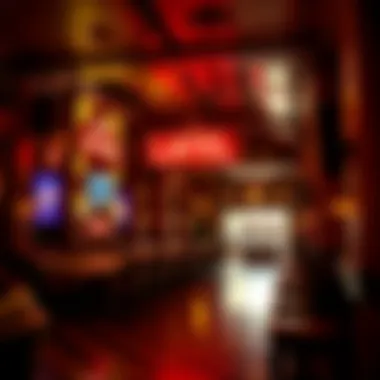

Band pioneers in the Las Vegas lounge scene are another crucial element contributing to the liveliness of this entertainment domain. These bands often blend genres, experimenting with sounds to create original and unique musical experiences. Their key characteristic is collaboration; various artists come together to produce music that resonates powerfully with audiences. This aspect is vital in understanding the contemporary lounge act, as many of today’s bands draw inspiration from past legends while forging their own distinct paths.
The unique feature of band pioneers lies in their communal approach to performance. Unlike solo artists, these bands thrive on their collective dynamics, creating an atmosphere that is both engaging and immersive. However, while bands can amplify the performance experience, they might face difficulties in market differentiation—a crucial aspect in a saturated space. The evolving tastes of audiences play a significant role; hence, staying relevant is a persistent challenge for these bands.
The Evolution of Lounge Acts in the Digital Age
The landscape of lounge acts in Las Vegas has transformed significantly with the infusion of technology, especially in the digital age. This evolution reflects not just shifts in how performances are delivered but also how audiences engage with these acts. In a city synonymous with glitz and glamour, the integration of modern technologies carries a particularly heavy weight, influencing everything from marketing strategies to audience engagement.
Social Media Influence
Social media platforms have become a lifeline for artists trying to make their mark in Vegas. A few decades back, a performer had to rely mainly on word of mouth or local promotions to draw in crowds. Today, a video shared on Instagram or TikTok can serve to launch a performer’s career overnight. This new method doesn’t just amplify the voice of established acts; it offers a stage for lesser-known artists to shine.
Lounge acts now utilize social media to not only promote their performances but also to connect with their audience on a more personal level. Highlighting unique moments, behind-the-scenes antics, or snippets from their sets allows performers to form a more genuine bond with their fans. Moreover, the ability to share multiple formats—videos, stories, and live streams—allows a performer to showcase their versatility without being tethered to just one medium.
However, navigating this landscape isn't without its pitfalls. Artists must be consistently engaging, cultivating an online presence that matches their offline persona, which can be exhausting. Plus, the instant feedback loop of social media can sometimes amplify negative reactions. Nonetheless, for the savvy performer, social media serves as a powerful tool for growth and outreach.
"Social media has allowed me to reach audiences I never thought possible. I can perform onstage and connect with fans across the globe—all in one evening," says local lounge performer Jason Reed.
Streaming Platforms and Accessibility
With the rise of streaming platforms, lounge performances are more accessible than ever before. Just a few clicks on YouTube or a tap on a mobile app can transport a viewer from their living room to a Las Vegas lounge. Artists can upload their performance videos, live stream events, or even offer exclusive content for subscribers. This not only opens up revenue streams but also breaks geographical barriers.
Emerging artists now have the opportunity to gain exposure to a global audience, bypassing traditional distribution methods. A performance that may only pull in a handful of attendees at a small venue could reach thousands online. This is drawing in casual fans and dedicated followers alike, creating a melting pot of diverse audience demographics.
However, this increased accessibility means lounge performers have to find ways to stand out in an ever-crowded digital bazaar. Acts are faced with the challenge of maintaining not just a physical presence in Las Vegas but also crafting a digital identity that resonates with their audience. More artists are embracing live-streaming options that allow fans who might not be able to visit Vegas in person to still experience the thrill of their performances.
As lounge acts continue to navigate their path in this digital age, the interplay between traditional performance artistry and contemporary technology will undeniably mold the future of entertainment in Las Vegas. The opportunities for growth and engagement are plentiful, but the complexities of digital presence require a careful approach.
The Future of Lounge Acts in Las Vegas
As the bright lights of Las Vegas continue to illuminate the promise of fresh entertainment, the landscape of lounge acts is poised for fascinating changes. The allure of these performances, steeped in a rich tradition, faces the headwinds of modern cultural shifts. Understanding the future of lounge acts is crucial not only for performers but also for audiences who cherish the unique flavor of nightlife this city has to offer.
Emerging Trends
The lounge scene in Las Vegas is experiencing a resurgence driven by various modern influences. In particular, there are several emerging trends shaping the direction of these acts:
- Hybrid Performances: Nowadays, it's not uncommon to find lounge acts blending genres. For example, a jazz singer might throw in a pop ballad, appealing to broader tastes. This fluidity creates a more engaging experience for patrons.
- Interactive Experiences: Lounge acts are becoming increasingly participative. Many performers encourage audience interaction, breaking down the barrier between stage and crowd. This shift results in a more dynamic atmosphere.
- Thematic Nights: More lounges are adopting themed nights that center around specific genres or cultural motifs. Whether it’s a 70s night or a Latino fiesta, these themes draw in diverse crowds, keeping the essence of the lounge fresh and exciting.
- Technology Integration: With the rise of digital platforms, some lounges incorporate technology into live shows. From live streaming performances for global audiences to using augmented reality, these innovations enhance the engagement many seek.
- Diverse Talent Pools: As the city becomes more cosmopolitan, the range of performers has widened. More artists from varied backgrounds bring different cultural influences, enriching the traditional lounge experience.
Potential Challenges
Despite the excitement of evolving trends, the future of lounge acts isn't without its hurdles.
- Changing Consumer Preferences: Audiences today are bombarded with entertainment options. With streaming services at their fingertips, keeping the local lounge scene relevant is a tough gig. Performers must find ways to deliver an experience that's worth the trip through the casino's labyrinth of slot machines.
- Competition from Other Entertainment Forms: Las Vegas is known for its grand shows and lively clubs, which often overshadow the more intimate vibe of lounges. Competing for attention is a constant challenge for those performing in these venues.
- Economic Factors: Fluctuating economic conditions directly impact disposable incomes, which in turn affects attendance at lounges. Acts must adapt to the financial realities of their audiences, perhaps by offering tiered pricing or special promotions.
- Sustaining Talent: Up-and-coming artists face a daunting challenge when breaking into the lounge scene. Established acts can carry significant weight and finding the balance of new talent while still appealing to loyal fans is delicate.
- Regulatory Changes: As always, the regulatory landscape affects how lounge acts operate. Whether it's licensing or noise ordinances, performers need to stay savvy about the rules governing their art.
The trajectory of lounge acts in Las Vegas is indicative of broader cultural trends and consumer demands. As the city continues to evolve, so too will its entertainment offerings. Performing artists and venue owners must navigate these changes to enhance the vibrant nightlife for all who visit.
"The past is prologue, but the future of lounge acts is a blank canvas, awaiting the strokes of creative passion that will define its place in Las Vegas."
For more information on the evolving trends in the entertainment industry, you can visit britannica.com or for insight into Las Vegas nightlife, consider checking reddit.com.
Closure
The vibrant world of lounge acts in Las Vegas serves as a fascinating microcosm of entertainment itself. These performances are not just fragments of a night out; they embody a rich historical tapestry that continues to evolve, enticing audiences both old and new. Lounge acts, by their very nature, are not confined to a singular style or genre. Instead, they embrace a wide array of performances ranging from jazz ensembles to solo acoustic performances, each contributing to a broader narrative of cultural diversity within the Las Vegas entertainment scene.
The enduring appeal of lounge acts unfolds through several layers of importance that make them a unique fixture in Las Vegas. For one, they reflect societal changes and cultural trends, melting together influences from different genres and styles. This amalgamation provides not just entertainment, but also a connection for listeners, as they may find echoes of their own life stories within the music or comedy they enjoy. The vibrancy of this interaction adds depth to the lounge experience, transforming it from a passive activity to an engaging communal event.
Moreover, lounge acts often serve as a springboard for new talent in the entertainment industry. Many artists start their careers in the intimate setting of a lounge, honing their skills and developing their artistry within a nurturing environment. This creates opportunities for emerging performers and maintains a dynamic element in an industry that thrives on novelty. With a steady stream of talent rotating through lounge venues, the audience always has something fresh to gaze upon while harking back to the foundational legends like Frank Sinatra and Elvis Presley, whose influence is unmistakable.
However, the landscape of lounge acts is not without challenges. As Las Vegas continues to adapt to technological advancements and changing consumer preferences, the future of these acts hangs in a delicate balance. The rise of streaming platforms and social media means that lounge performances can reach audiences far beyond the borders of Las Vegas, but this also means increased competition for attention. Navigating this new terrain calls for innovation and adaptability from both performers and venues to remain relevant in a rapidly evolving entertainment ecosystem.
In essence, the conclusion reminds us that lounge acts in Las Vegas encapsulate more than just entertainment; they are a reflection of our social fabric, a platform for artistic exploration, and a barometer of cultural shifts. Their enduring appeal lies in their ability to bridge the gap between nostalgia and modernity, offering a glimpse into the past while paving the way for the future.
"Lounge acts are not mere performances; they are vibrant conversations between artists and audiences, echoing the heartbeats of creativity and cultural dialogues."
As we navigate the constantly shifting tapestry of entertainment, the role of lounge acts will inevitably shift and adapt, ensuring that their story remains inextricably linked with the ever-evolving narrative of Las Vegas.



